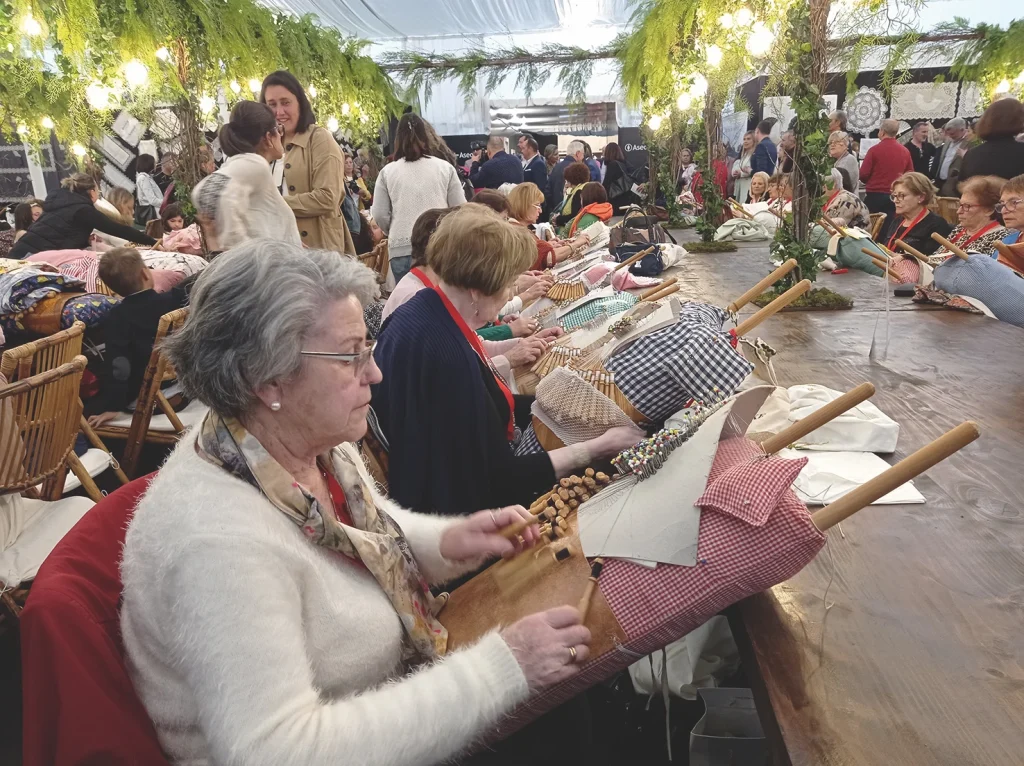This period ranges from the end of the 15th c. to the late 19th c., approximately three centuries. It is also referred to as the Ancien Regime. This period commenced with greater centralisation of royal power after the arrival of the Catholic Monarchs, who created new institutions to limit the power of the nobility. Part of the aristocracy was transferred to the court at the service of the new monarchs.
The main feature of the territorial division of the period was the seigneurial rights acquired over a geographical area from donations or inheritance, giving rise to jurisdictions and hunting reserves, over which an ecclesiastical or lay lord would exercise their authority and be entitled to collect a series of taxes from the local inhabitants. Each jurisdiction was divided into parishes.
During this period, Costa da Morte belonged to the large provinces of Santiago, apart from the lands more to the north in the region of Bergantiños, which were included in the province of A Coruña. Much of the coastal region was owned by the Moscosos or the counts of Altamira, who exercised their domain over the large jurisdictions of Corcubión, Vimianzo and Mens, which were made up of a total of seventy two parishes and an approximate surface area of 675 km2, almost half of the geographical area of the region. The rest was shared between abbots or priors of monasteries, bishops and archbishops, the king and other nobles such as the Bermúdez de Castro from Torres de Nogueira (Seavia, Coristanco) and the town of Caión, or the counts of Maceda, who shared their possessions in several parishes with the count of Altamira. The archbishop of Santiago owned the towns of Fisterra, Muxía and Malpica, while the monastery of San Martiño Pinario had authority over the jurisdictions of Ozón (Muxía), Baíñas (Vimianzo) and Rus (Carballo).
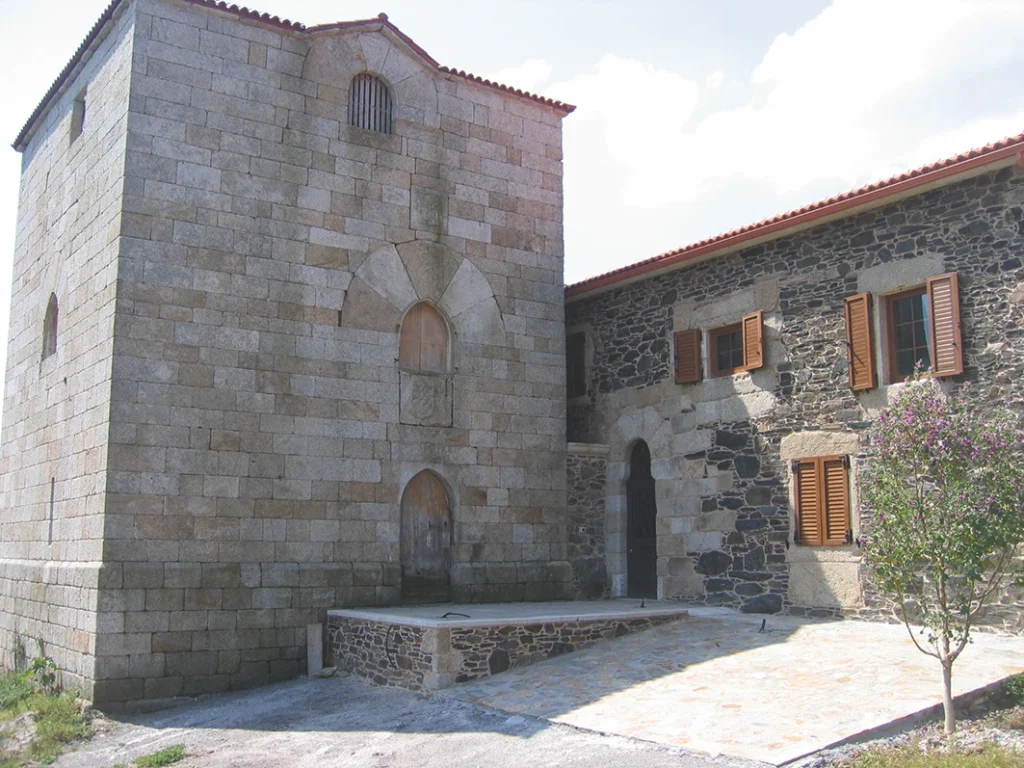
The population of Costa da Morte grew overall in the 16h and 17th centuries. The greatest growth took place in the coastal area due to the increase in fishing and associated trade. However, there were periods when it dropped, such as during the epidemic of 1571, when towns like Muxía, with 140 inhabitants, were left with just 40 (Benlloch del Río, 2010: 39). This upward trend in the population was consolidated in the mid-17th century, as a result of the introduction of maize from America, which began to be cultivated in the coastal areas because of its most appropriate weather conditions.
According to the census of 1533 on the populations of reserves and jurisdictions of the Crown of Castile, the towns in the south of Costa da Morte had the following number of residents: Muxía 57 (228 inhabitants), Cee 59 (236 inhabitants), Corcubión 46 (184 inhabitants) and Fisterra 39 (156 inhabitants). The data are not very reliable, but they do a rough idea of the population of these towns.
In the early 17th century, according to information given by cardinal Jerónimo del Hoyo in his biography (Memorias, 1607), Cee and Corcubión saw a significant increase in population, while the upward trend in other towns was much smaller.
| Towns | Residents | Inhabitants (approx.) |
| Fisterra | 60 | 240 |
| Corcubión | 120 | 480 |
| Cee | 120 | 480 |
| Muxía | 60 | 240 |
| Camariñas | 50 | 200 |
| Laxe | 40 | 160 |
| Malpica | 62 | 248 |
The main economic activities in all these towns were fishing and maritime trade. The most frequently caught species were sardines, hake and conger. All the fish caught for sale had to be salted, smoked or air cured to be conserved. After being caught in nets, sardines were conserved in salt or smoked. Salt was a scarce commodity that came from Portugal or Brittany and was under a state monopoly by crown officials at the storehouses. Establishments of this type are mentioned in the towns of Fisterra, Corcubión, Cee and Muxía in the 15th century. Smoking was carried out in enclosed buildings called fumeiros, in which different plants were burned, especially bay leaves.
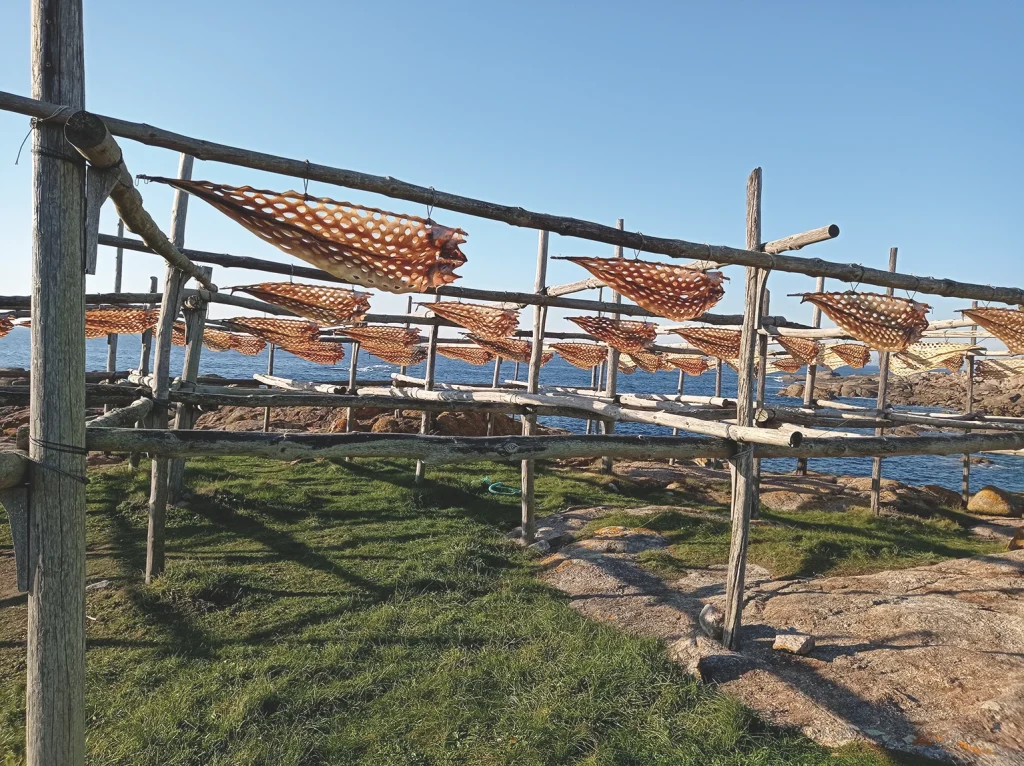
Conger and hake were air cured, although hake could also be salted. Conger was fished with gorentes, an old type of longline, and dried on coastal wooden structures where the fish hang after being gutted, cut and washed in seawater. The dry northeast wind typical of this coastline is ideal for this process. Hake was also dried on wooden racks next to houses (caniços), as described in the history of the town of Cee (Castiñeira Castro, V. M., 1999: 253).
Cured or salted hake was exported to different parts of the Iberian Peninsula There are records from the 16th and 17th centuries of traders from Rías Baixas coming to ports in Costa da Morte to buy hake and conger and then sell it in the Basque Country, Portugal or the Mediterranean. From there it was transported to areas in La Rioja, Castile and Aragon. Boats from these ports – called barcos de cubierta – also transported this type of fish to other parts of the peninsular coast. Camariñas was one of the most active ports in this regard. Boats loaded with sardines headed off from Camariñas for the Basque Country and returned with iron.
Whaling was also practised in this period from ports on Costa da Morte, especially in the northern regions This activity was mentioned in the Middle Ages, but the most detailed reference comes from Juan de Molina in the mid-16th c., when he described the ports of Malpica and Caión. Whales were hunted in winter for their oil. The practice died out in the late 17th century due to competition from other countries.
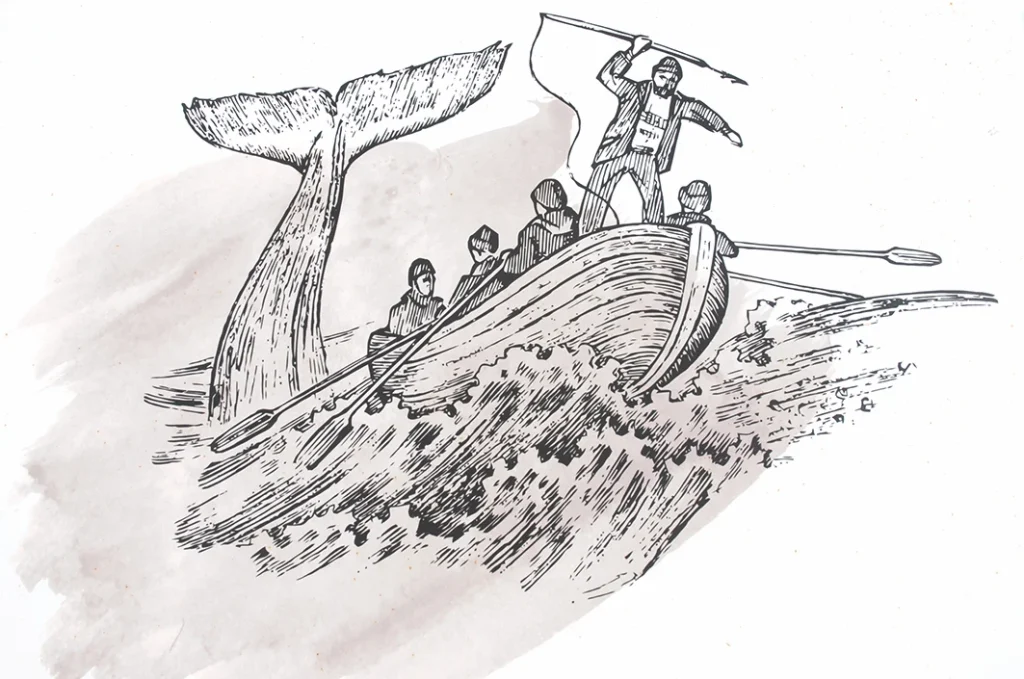
Major changes to the Galician fishery sector took place in the mid-18th century due to the enactment of the General Ordinance of 1748, which in theory freed sailors from the jurisdictional impositions of the church and nobility, although some taxes were still claimed. Likewise established was greater maritime safety, freedom to fish and the option of using new technologies in both fishing and in conserving and selling fish. But the new laws included a series of obligations and duties that would gravely affect their work and permit the arrival of the Catalans at the Galician coast, first occasionally and then as a constant presence.
These Catalan promoters enjoyed the privilege of not having to do military service in the Navy, since members of the Catalan fishermen’s guilds were not obliged to enlist, but Galician sailors were obliged to do so between the ages of 16 and 60 years of age, in the event of any conflict.
The Catalans arrived at the Galician coasts with the intention of fishing the abundant banks of sardines that existed at the time; they would then be salted and sold on the Mediterranean market. Their presence brought about many changes in the sector, as they ended up dominating the fishing industry and using more advanced and aggressive techniques such as the seine net and pressing to conserve the fish. They increased trade on the Mediterranean route, taking salted sardines and bringing wine, liquors and salt.
These new entrepreneurs soon formed part of the social elite in the coastal towns and occupied important posts in local administration and politics. There are details of the arrival of the Catalans in the ría of Corcubión in 1755. The ports where their presence was most noted were Fisterra, Cee, Corcubión, Camariñas and Laxe. Catalan surnames such as Xampen, Pou, Agramunt and Carbonell were common in the ría of Corcubión, while Domènech, Mas, Haz and Borrell were more frequently seen in the rías of Camariñas and Corme and Laxe.
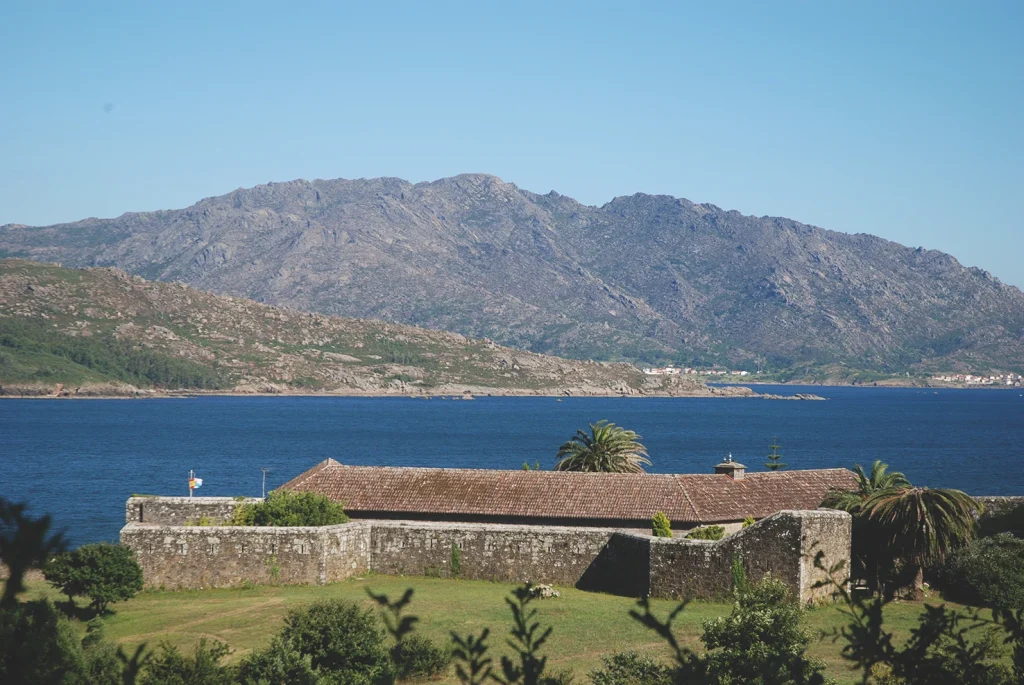
During this period, the coastal towns of this region and in many other parts of the Galician coast were frequent victims of attacks by pirates from European Atlantic countries and North Africa. Fisterra, Corcubión, Cee, Muxía, Camariñas and Laxe were most frequently attacked and pillaged, since they had few resources to defend themselves against the raids, often possessing small defensive redoubts with just one or two cannons. The first batteries in the rías of Corcubión and Camariñas were not built until the mid-17th century. The forts of San Carlos (Fisterra), El Cardenal (Corcubión) and El Príncipe (Cee) were built in the ría of Corcubión and can still be seen today. The fort of El Soberano was built in the ría of Camariñas, of which just a few foundations remain.
While inhabitants of the coastal areas of Costa da Morte lived mainly from fishing, people further inland made their living from farming and livestock. Most of the farmland was leased under statutory contracts granted by an ecclesiastical institution, a noble or hidalgo, who imposed an annual rent that was almost always paid in kind: wheat, barley or corn.
Priories such as Moraime, Ozón and Baíñas owned large stretches of leased land from which they gathered large amounts of cereals. The rents that Moraime received every year in the second half of the 17th century were 3,500 ferrados (a local measurement of weight ranging from 12 to 20 kilos) of wheat, more than 1,000 ferrados of maize and about 600 of barley. These rents made it one of the communities that paid most revenue to its corresponding monastery, San Martiño Pinario in Santiago. The revenue jointly provided every year by the priories of Ozón and Baíñas to San Martiño was approximately 2,700 ferrados of wheat, 1,200 of barley and about 800 of maize (Castiñeira Castro, 2000: 2019).
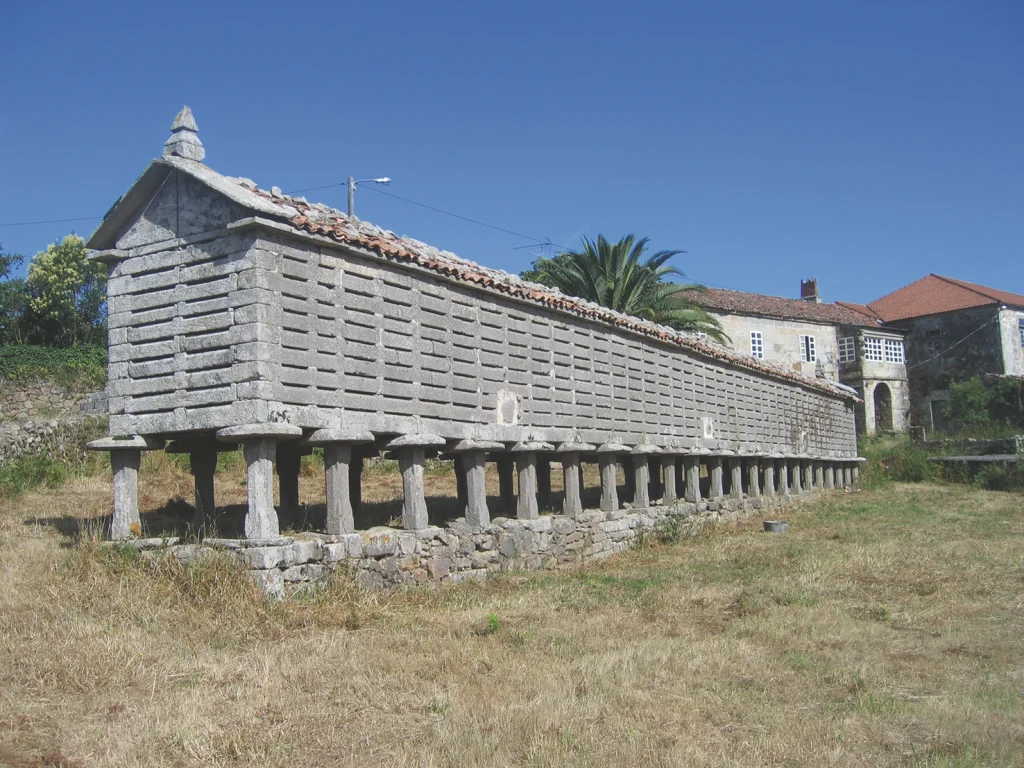
After paying the tithes and other taxes, farmers were left with hardly enough rosources to live on. Practically all the wheat that was harvested went to pay tithes and other taxes; they attempted to keep a reserve of maize to bake broa (a kind of local corn bread) and feed the domestic animals. Farms were small and crops were rotated on a three-yearly basis. Wheat or barley were planted in the first year, while maize was planted in the two following ones.
The potato—another plant from America—was introduced as a crop in the 18th century, and began to extend from the interior to the coastal farms. Potatoes began to replace chestnuts and helped to improve the diet of the poorest classes.
An example of the intensive farming of corn in Costa da Morte are the large number of hórreos or granaries that were built to store and preserve maize. Some of the longest ones can still be seen in Lira, Carnota, Ozón, Cereixo and Cambeda. With the exception of the hórreo at Cereixo, the others belonged to the Church and were used to store the harvests from the rents and taxes that farmers were obliged to pay to the clergy.
Fishing was the predominant occupation in the coastal towns, but there were others: traders, craftsmen, cobblers, tailors, lawyers and apothecaries also plied their trade there, as the towns also served as small commercial and service centres for the surrounding population. The main occupation in the rural parishes was that of farmer, although other trades such as the tavern keeper, carpenter, blacksmith, cobbler, seamstress and weaver were also present. Some tradesmen worked part time, alternating between their craft and work on the farm. A special case in this regard is Buño, where most of the population specialised in pottery. Records of this activity date back to the 16th century, when craftsmen of the parish made pipes for the first water network in the city of A Coruña.
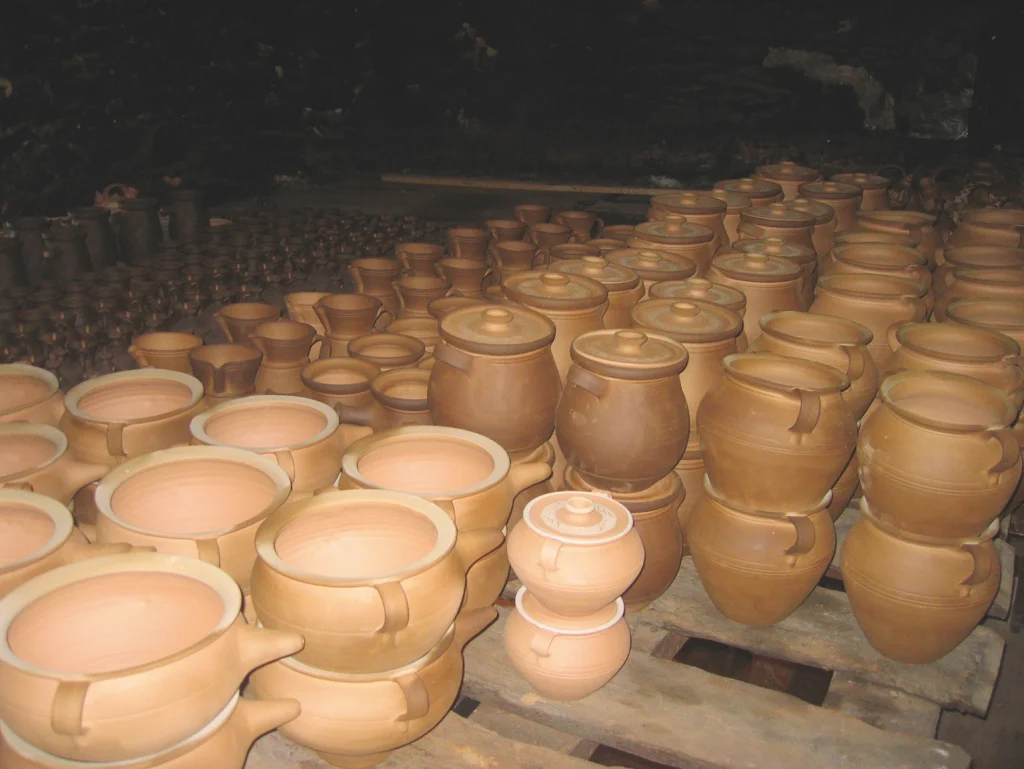
Pottery made in Buño was exported by sea from Ponteceso and Corme to other parts of Galicia and even to Asturias and Portugal. Mule drivers distributed the pottery by land and sold it at fairs and inland towns.
Flax was also an important crop in Costa da Morte, especially in the regions of Soneira and Bergantiños. It was used to produce fabrics on the rural looms for domestic use or for export. The arrival of flax from other regions and the textile industry led to the disappearance of handcrafted fabrics. The craft that reached its apogee in the region was lace work, especially in the coastal areas. There are no details as to how it was introduced into Galicia, but there are records from the 15th century of its presence in the region. The craft had spread to the entire coast of Galicia and some inland regions by the mid-18th century. With the passage of time, the lace work industry shrank to some small areas surrounding the ría of Camariñas. It was of some importance to the family economy, since it represented a necessary complement in the homes of fishermen and farmers. Before reaching its maximum splendour in the late 19th and early 20th c., when lace makers took advantage of the great demand for lace in Latin America, it was sold in Galicia and inland Spain, carried by farm workers travelling to work in the harvests in Castile
